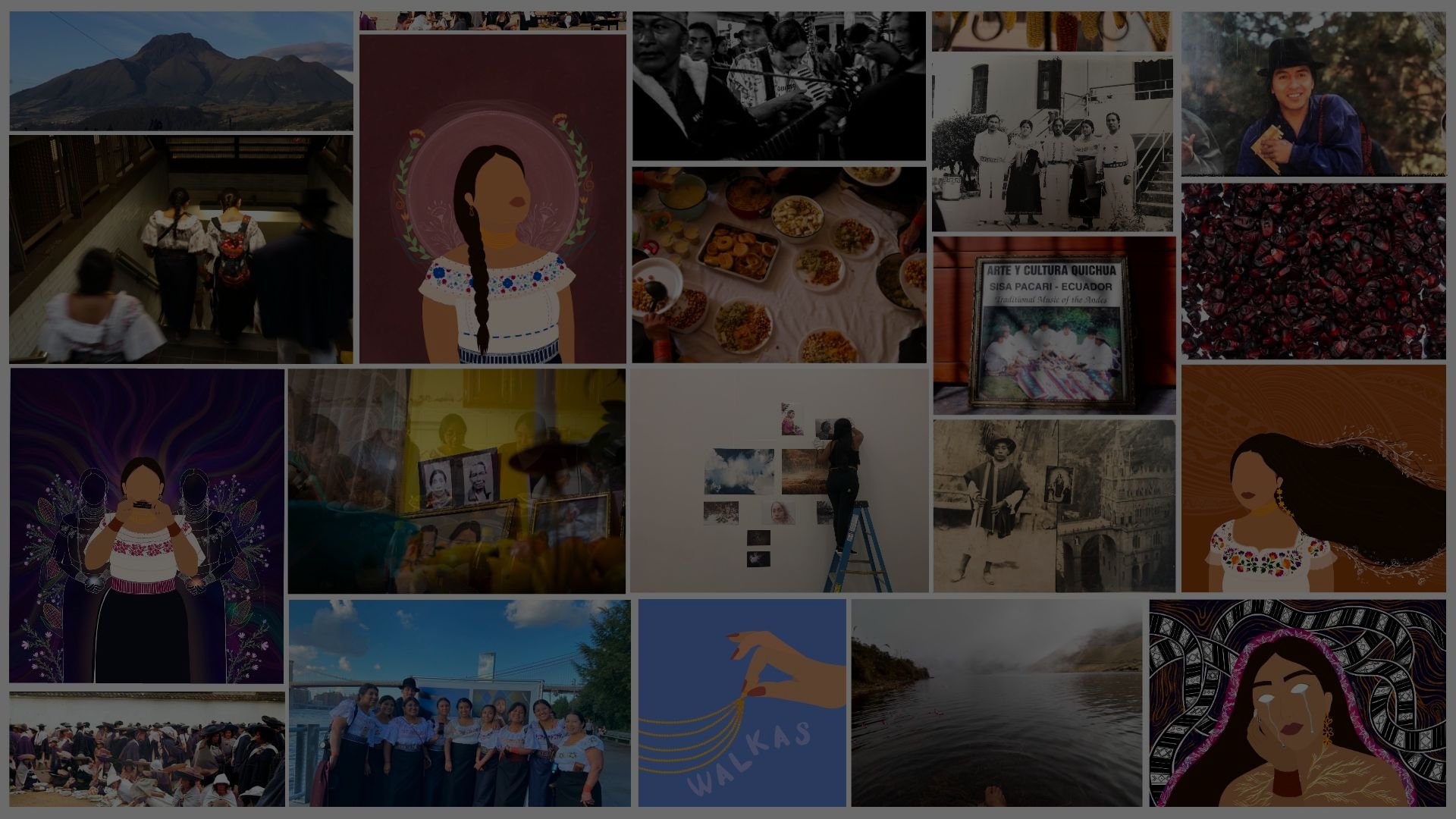
Kaypimi Kanchik
We Are Here
Traditional forms of storytelling have served as vital forms of communications throughout generations and in many different communities. Oral storytelling becoming a lifeline for many indigenous cultures and practices because of its ability to transmit knowledge and evolve while preserving ancestral knowledge. Traditionally in kichwa communities, oral storytelling was practiced in comunal spaces one of these spaces was the Tulpa, the tulpa was at the center of many homes not only because it was a heating source for houses but it was a meeting point for many families where they ate, talked, and spent time together. Even though many homes no longer preserve these types of communal spaces, there are still spaces that reflect this custom of gathering to spend time together. For me this custom was reflected in the time I spent with my mom in the kitchen, with my dad in the basement while he played his music, and with my family at the dinner table. This project was born from the memory of my family when we would sit around the table after having a dinner, we used to talk sometimes for hours not only about what we had done during the day but deep conversations that ended in stories about the experiences of my parents and their memories of their lives in Ecuador. Many of these stories played a fundamental part in the shaping of my identity as a kichwa-Otavalo warmi (woman) who grew up in the diaspora.
About
Kaypimi Kanchik: We Are Here, is a multidisciplinary project that has been in the works for many years. Aside from that this project stems from the question I asked myself since the day I was told I was Indigenous, what is identity? Who am I? Why is it so important? This project not only centers my identity, but it merges my love for who I am as an indigenous woman, and my love for storytelling as it has played a crucial role in knowing who I am. Acknowledging that storytelling has made such an impact in my life this project aims to analyze how storytelling has been impactful for several people who have become artists/creators and utilize digital mediums to storytell and to continue the legacy of many of our ancestors. While this project aims to answer my questions of why identity is so important? and how we are able to draw parallel between identity and storytelling, this project also focuses on different stories that make people who they are, especially in indigenous youth who grew up in the diaspora and people who grew up outside the city of Otavalo. Kaypimi Kanchik: we are here, branches off into three different components, podcast series, short stories, and interviews.



